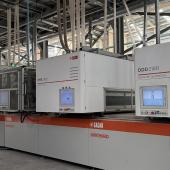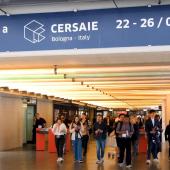Ceramic of the future at Tecnargilla
The exhibition will feature the work of students at the European Design Institute in Milan (the most prestigious Italian research and training institute in the fields of Design, Fashion and Visual Communication) and covers a wide range of sections, from possible new product types and applications of ceramic in the domestic environment, public building and urban design, to future trends in colours and materials.
The projects focus in particular on three-dimensionality, colour, functionality and sensoriality.
The exhibition is held in the exhibition centre’s central hall.
The in-focus section features four of the proposals on show in the Ceramic Workshop.

“Game tile”, a project that combines play and learning, adopting tiles as a form of physical and sensorial interaction for children in nursery schools, play centres, gardens, parks and paediatric hospitals.
Using 10 numbered tiles assembled in different patterns, it is possible to create a floor covering that can be used for traditional children’s games.


Decoration based on a two-colour system or the combination of ceramic and plexiglass, functionality and modularity are the characteristics of the “Funzionale”, “Elle” and “Componibile” projects.
The three-dimensional scope of tiles is exploited to create equipped walls for the bathroom or kitchen, which can be customised according to the objects that need to be placed or hung there.



Did you find this article useful?
Join the CWW community to receive the most important news from the global ceramic industry every two weeks
Recent articles
Gruppo B&T at Ceramics China 2025
Jun 30, 2025
Cersaie 2025 already booked out
Jun 27, 2025
GMM USA installs IMAnalytics system in the USA
Jun 26, 2025





















